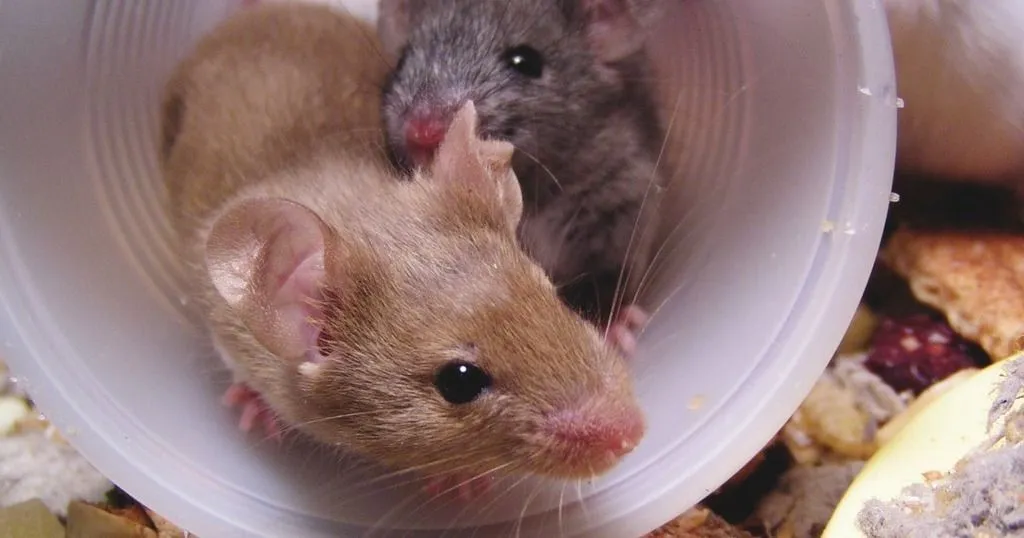Revealing the secret social role of the CA2 hippocampus
Aggressive behavior is adaptive for most species. But how is this aggressive behavior mediated in the brain? A study indicates that the hippocampus is a crucial neural component in mediating social recognition.
Posted by
Published on
Thu 23 Jul. 2015
Topics
| Aggression | Anxiety | EthoVision XT | Mice | Open Field | Social Behavior Research | The Observer XT | Video Tracking | Zero Maze |

Aggressive behavior is typically adaptive for most species in the animal kingdom. Examples of this can be seen in maternal aggression to protect one’s young, and defense of a home territory; both of these contribute to the survival of an individual, and the species as a whole.
But how is aggressive behavior mediated in the brain? Recent work indicates that the hippocampus in general, and the CA2 region in particular, is a crucial neural component in mediating social recognition and aggression. What CA2-specific mechanisms allow for such regulation?
Vasopression 1b receptor in the hippocampus
The neuropeptides Oxytocin (Oxt) and Vasopression (Avp) underlie many different types of social behaviors in rodents, including maternal behavior, aggression, and social recognition. Oxt receptors, and one type of Avp receptor (Avpr1a) are expressed throughout the central nervous system; a second Avp receptor (Avpr1b) is expressed almost exclusively in the CA2 region of the hippocampus.
Indeed, researchers from Scott Young’s lab at the National Institute of Mental Health showed that male genetic knockouts (KO), lacking the Avpr1b receptor, show reduced male-male aggression (Wersinger et al., 2002, Mol Psychiatry). This data, and the location of the Avpr1b, suggest a specific role for this receptor in proper regulation of social aggression and recognition.
Regulation of social aggression via Avpr1b receptor
In a continuation of their earlier work, new research from the Young lab has further investigated the role of Avp in regulating social aggression, acting at the Avpr1b receptor in the CA2 hippocampus. By using lentiviral injections to partially restore the Avpr1b receptor back into the CA2 of Avp KO mice, Pagani et al were able to test the idea that Avpr1b receptor in the CA2 is necessary for proper social aggression.
Three groups of mice underwent social aggression testing: Wildtype (WT), KO with a GFP lentivirus (KO+GFP; this should not restore social aggression in a KO mouse), and KO with Avpr1b lentivirus (KO+Avpr1b). Lentivirus was injected in 6 locations throughout the CA2 hippocampus, covering 60-100% of the CA2 hippocampus, as observed by in situ hybridization of the subjects’ brain tissue after behavior testing.
Resident-intruder test
Control and injected male mice were tested for aggressive behavior via the resident-intruder test, where experimental subjects were allowed to establish a home cage territory (resident), and an intruder was introduced until either an aggressive encounter occurred (and allowed to continue for 2 minutes), or 5 minutes total elapsed; when either condition was met the intruder was removed.
Aggressive interactions were recorded, and The Observer XT software was used to score and analyze the aggressive encounters for behaviors including latency to attack, attack duration, number of bites, and number of tail rattles.
Changes to aggressive behavior often co-occur with altered anxiety-like behavior; EthoVision XT tracking software was used to assess performance on the elevated zero maze and open field test.
For both tasks, distance traveled was measured, as was duration and frequency of entry into open arms of the elevated zero maze and center of the open field.
FREE TRIAL: Try EthoVision XT yourself!
Request a free trial and find out what EthoVision XT can do for your research!
- A cost-effective solution
- Powerful data selection
- Most cited video tracking system
Avpr1b receptor replacement rescues social aggression
As hypothesized, only WT and KO+Avpr1b mouse groups expressed the Avpr1b receptor in the CA2. These two groups also exhibited significantly different aggressive behavior compared to the KO+GFP group, with a significantly higher percentage of attacks in both WT and KO+Avpr1b groups compared to KO+GFP group. Of note is the fact that WT and KO+Avpr1b groups did not differ from one another on this variable. The groups did not significantly differ in attack duration, or number of attacks.
The rescue of aggressive behavior in KO+Avpr1b males was not linked to changes in anxiety-like behaviors. Analysis with Ethovision software in both the open field revealed no differences across groups in general locomotor activity, or frequency and durations of entries into the central area of the open field. Similarly, there were no differences across groups in locomotor activity on the elevated zero maze, or in frequency of entries or duration of entries into the closed arms of the maze.
Avp induces synaptic change in CA2 cells
Finally, the lab showed that during whole cell recordings in the pyramidal cells of the CA2 hippocampus, applying a selective Avpr1b receptor agonist induced a significant potentiation of excitatory post synaptic currents (EPSCs) in WTs, but not in Avpr1b KOs. The same Avpr1b receptor agonist did not induce this response in the CA1 hippocampus.
By acting to potentiate only the AMPA receptor-dependent component of the EPSCs, not the NMDA receptor-dependent component, and not affecting paired-pulse facilitation, the results suggest that the Avp agonist acts postsynaptically to facilitate synaptic transmission in CA2. As this is not seen in other regions of the hippocampus, the CA2 may be unique among hippocampal regions in allowing Avp to modulate the synaptic strength of the CA2 neurons.
Earlier research indicates that inhibiting CA2 synaptic transmission has the same effects on social memory as is seen in Avpr1b KO mice. The current work supports the idea that activation of the Avpr1b receptor in the CA2 hippocampus is critically important for proper expression of appropriate social behavior, including social aggression.
To learn more about the study described in this post, read the complete article:
Pagani, J.H., Zhao, M., Cui, Z., Williams Avram, S.K., Caruana, D.A., Dudek, S.M., and Young, W.S. 3rd (2014). Role of the vasopression 1b receptor in rodent aggressive behavior and synaptic plasticity in hippocampal area CA2. Molecular Psychiatry, 1-10.
RESOURCES: Read more about EthoVision XT
Find out how EthoVision XT is used in a wide range of studies and how it can elevate your research!
- Free white papers and case studies
- Customer success stories
- Featured blog posts
Related Posts

Zinc deficiency, depression and electrical signals in the brain

Freeze! A recent study on PTSD and the immune system
